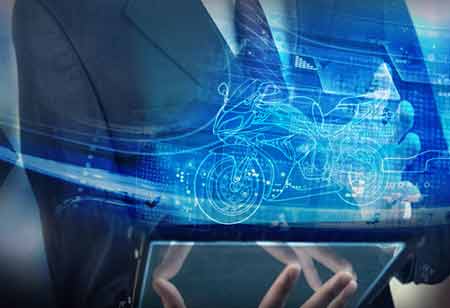Thank you for Subscribing to Auto Business Outlook Weekly Brief
Adapting and Thriving: Reshaping Supply Chains in the Post-Pandemic Era for Auto Manufacturers
The COVID-19 pandemic has acted as a catalyst for change in the automotive industry's supply chain strategies

By
Auto Business Outlook | Saturday, September 30, 2023
Stay ahead of the industry with exclusive feature stories on the top companies, expert insights and the latest news delivered straight to your inbox. Subscribe today.

The COVID-19 pandemic has acted as a catalyst for change in the automotive industry's supply chain strategies
FREMONT, CA: Like many others, the automotive industry faced unprecedented supply chain challenges during the COVID-19 pandemic. As the world emerges from the crisis, auto manufacturers are reevaluating and reshaping their supply chains to enhance resilience and adapt to a rapidly evolving business landscape. This transformation is not only about mitigating the impact of future disruptions but also about seizing new opportunities. In this exploration, we delve into the post-pandemic outlook for supply chains in the automotive sector.
The Pandemic's Supply Chain Shock:
The COVID-19 pandemic exposed vulnerabilities in global supply chains that the automotive industry heavily relies upon. Lockdowns, border closures, and disruptions at manufacturing facilities created bottlenecks in the supply chain, leading to production delays and shortages of critical components.
Resilience and Agility as Imperatives:
In response to these challenges, auto manufacturers are rethinking their supply chain strategies with a focus on resilience and agility:
1. Regionalization: The move towards regionalized supply chains is a notable shift. Manufacturers can better navigate disruptions and reduce transportation-related emissions by reducing dependence on distant suppliers.
2. Diversification: Manufacturers are diversifying their supplier base to reduce risk. This involves sourcing critical components from multiple suppliers to ensure a continuous flow of parts, even if one supplier faces disruptions.
3. Inventory Management: Maintaining strategic stockpiles of critical components and materials is becoming more common to buffer against supply chain disruptions.
4. Data-Driven Insights: Manufacturers are gaining greater visibility into their supply chains by leveraging data analytics and artificial intelligence. This enables proactive identification of potential bottlenecks and areas for improvement.
5. Local Sourcing: Auto manufacturers are exploring opportunities to source components locally, supporting nearby suppliers and reducing transportation costs.
Opportunities for Innovation:
While the pandemic exposed vulnerabilities, it also accelerated innovation in supply chains:
1. Digitalization: The adoption of digital tools and technologies, such as blockchain for supply chain transparency and the Internet of Things (IoT) for real-time monitoring, is rising.
2. 3D Printing: Manufacturers increasingly turn to 3D printing for rapid prototyping and producing spare parts, reducing lead times.
3. Sustainable Practices: The push for sustainability extends to supply chains. Manufacturers are actively seeking ways to reduce the environmental impact of their supply chain operations.
The Electric Vehicle (EV) Factor:
The transition to electric vehicles (EVs) is reshaping supply chains. As the demand for EVs grows, manufacturers adapt their supply chains to accommodate the unique requirements of electric drivetrains and battery components.
Challenges and Considerations:
Despite the opportunities, challenges remain in reshaping supply chains:
1. Costs: Building more resilient and agile supply chains can be costly, particularly for smaller manufacturers. Balancing these investments with affordability is a challenge.
2. Regulatory Compliance: Manufacturers must navigate complex regulations related to sourcing, environmental impact, and trade policies.
3. Talent and Skills: Developing and maintaining the skills and talent needed to manage sophisticated supply chains is a concern.
4. Geopolitical Risks: Political tensions and trade disputes can disrupt supply chains, making geopolitical risk management a priority.
Conclusion:
The COVID-19 pandemic has acted as a catalyst for change in the automotive industry's supply chain strategies. While the disruptions were challenging, they also spurred innovation and a renewed focus on resilience and agility. As the sector reshapes its supply chains, it is better prepared for future disruptions and poised to thrive in a rapidly changing business landscape. By embracing regionalization, diversification, digitalization, and sustainable practices, auto manufacturers are adapting to the post-pandemic era with a heightened sense of resilience and an eye toward a more sustainable and efficient future.






